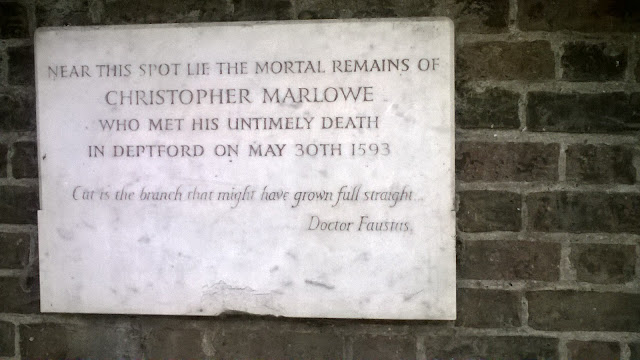Blackheath has a long history of suffrage activity. John
Stuart Mill (1806-1873) lived at 113 Blackheath Park from 1852-1871. It was
here he wrote his famous book On Liberty. He presented the first petition to
Parliament for votes for women in 1866. This effectively launched the British
Women’s Suffrage Campaign.
College for the Daughters of Gentlemen
Formerly 22a-26 Dartmouth Row, this is now Greyladies
Gardens. The school was run by the Browning Sisters who were Robert Browning’s
great aunts. Notable alumni include Millicent Garret Fawcett, President of the
National Union of Women’s Suffrage Societies and her sister Elisabeth Garret
Anderson –the first woman doctor in England. Emily Davies was a campaigner for
women’s education. She founded Girton College Cambridge. Millicent Fawcett is
honoured by a Gillian Wearing created statue in Parliament Square.
Blackheath Halls
Built in 1895-6, the building hosted a WSPU public
meeting in October 1909 which ended in uproar.
Apart from the Heath, other meeting places included 72
Tranquil Vale, now Le Bouchon wine shop, which was a WSPU shop. No.7 the
village as Jobbins tea rooms where both suffragists and suffragettes met. No.5 the village (now Shepherds Foods &
Winkworths estate agents) was the Ladies Reading Room.
Blackheath High School for Girls
Florence Marie Armoid Gadesden [Gadsden] headmistress of
Blackheath High School and suffragist was born in Paris on 15 May 1853. An
ardent suffragist, she was headmistress from 1880-1919. She ran the Ladies
Reading Room and was an ardent campaigner not only for women’s suffrage but
education. She lived at 3 The Orchard, just around the corner from militant
suffragette Rosa May Billinghurst. There is so much to say about Rosa May
Billinghurst, so she will feature in another blog posting.
Red House debates
On 11 July 1913 there was a suffrage debate at Blackheath
in the garden of Red House, Dartmouth Grove at the home of Mrs Duckham. It was
organised by the Blackheath branch of the London Society for Women’s Suffrage
(non-militant). Mrs Duckham was the branch secretary and often held meetings in
her home, now Dartmouth Court. 150 people attended the meeting on this
occasion.
Emily Wilding Davison
Emily Wilding Davison is probably the most famous British
suffragette. Born in Blackheath at 13 Vanbrugh Park West, Emily was a very
militant member of the Women's Social and Political Union (WSPU). She was
arrested nine times, went on hunger strike seven times and was force fed on
forty-nine occasions. She died after being hit by King George V's horse Anmer
at the 1913 Epsom Derby when she walked onto the track during the race. Suicide
or accident?
Suffrage pilgrims
On 1 September 1913, the Suffrage Pilgrims arrived at Lee
Green. They were marching from Kent to London as part of a national,
multi-route suffrage pilgrimage. They were met by the Blackheath branch of the
London Society of the National Union of Women’s Suffrage Societies. There was
an open air meeting at Whitfield Mount, a regular rallying ground of many
popular campaigns over the years. The story of the Great Pilgrimage for women’s
suffrage is told in detail by Jane Robinson in the book Hearts and Minds
(available for loan in Lewisham libraries). The book does not include this
particular incident but the event is also highlighted in the Suffrage Centenary
exhibition organised by the Local History and Archives Centre (LHAC), 2nd
Floor, Lewisham Library, Lewisham High Street.
 |
| Kentish Mercury September 1913 |




